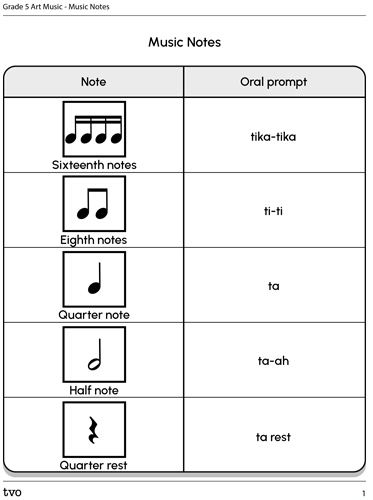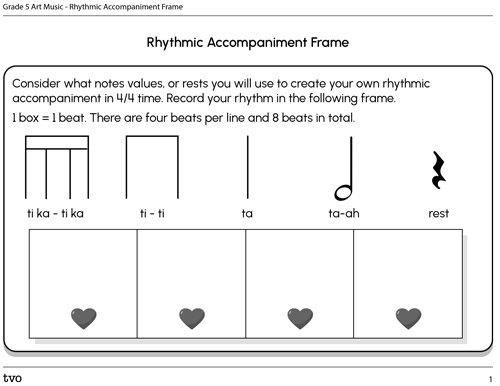Minds On
Today’s vocabulary
Press the following tabs to access today’s vocabulary.
Let’s get started!
Explore the following performance by Mahlikah Awe:ri.
As you explore, consider the following questions:
What do the words in Mahlikah’s poem make you think of?
How does Mahlikah express ideas and emotions in different ways throughout her performance?
Record your ideas on paper, digitally, or as an audio recording.
Access the following video entitled “The Space: Mahlikah Awe:ri” to check out their performance.
(Speaking in Mohawk)
I’m a tracker, which means I make tracks. I make beats, I make echoes, echo, echo. I make etchings and pictographs. I make skylines and tree lines and river beds. I make journeys and dreams, dreams and journeys. I make prophesy, I make prophesy. I make my people’s histories and her stories.
(Speaking in Mohawk)
Word story.
(Speaking in Mohawk)
The earth in which we stand. I am my people’s stories. I am a tracker. I am my people’s stories. I am. I am the stone. Gentle, jagged and smooth and still. I am the birch swaying longingly, branches open signalling for change. I am the mountain arcing, arching strength, resilience, an indomitable force. I am my people’s stories. I am a tracker. I am my people’s stories. I am. (singing in Mohawk)
-Mahlikah Awe:ri
Source: https://www.tvokids.com/school-age/space/videos/mahlikah-aweri
Action
Get ready, get set…
Spoken word artist Mahlikah Awe:ri
Mahlikha is Haudenosaunee Kanien’kéhà:ka and Mi’kmaw L’sitkuk of the Wolf Clan, from the Territory of Kahnawá:ke and the unceded traditional homelands of the Mi’kma’ki of Kespukwitk with African American, Afro-Caribbean and Irish ancestry.
You may have noticed that Mahlikah Awe:ri performed her poem in a specific way. Mahlikah is a spoken word artist. Spoken word incorporates diverse genres of music. The artist decides how they would like to use music to help share their story.
Spoken word poetry is a style that is performed orally. Spoken word can include elements of rap, hip-hop, storytelling, and jazz, rock, blues, and folk music. Features of spoken word poetry include rhyme, repetition, improvisation and word play.
Let’s return to the video and explore how Mahlikah incorporated elements of music in their performance.
Access the following video entitled “The Space: Mahlikah Awe:ri” to explore their performance again.
How did Mahlikah enhance their performance through music?
Press ‘Answer’ to access a possible answer.
What were some of the key ideas shared in Mahlikah’s poem?
Press ‘Answer’ to consider some key ideas.
Mahlikah repeats the phrase “I am my people’s stories”, which helps to call attention to it. Mahlikah might be suggesting that they have a strong personal connection between their identity and their community or ancestors.
Other words they used like, “prophesy,” “resilient,” and “indomitable force” could mean that Indigenous communities continue to thrive in the present day, and that their ways of knowing are not a thing of the past.
What did this poem make you think of? What emotions were conveyed in this poem?
Press ‘Answer’ to explore a possible answer.
What’s the message?
Explore the following word web for some sample themes, words, and emotions inspired by Mahlikah Awe:ri’s poem.
Which ones do you connect to? Are there any others you would add?

A graphic organizer with a central idea surrounded by other words. The central idea is Mahlikah’s poem. The surrounding words are resilience, family/ancestry, land, journey, music/rhythm, strength, pride, history, her story, love, culture, connection, identity, and land/nature.
Record the words that you connect with using a method of your choice.
Creating spoken word poetry
Now that you have considered some of the sample themes, words, and emotions inspired by Mahlikah’s poem, let’s explore the way she organizes the poem. Mahlikah uses specific strategies to emphasize certain parts of their poem.
Let’s explore the layers within Mahlikah’s performance and how they work together to share their message.
They use:
- repetition
- descriptive language
- rhythmic accompaniment
Repetition
Mahlikah uses repetition in their poem. For example, she repeats the sentence started “I make” in the first half of their poem and then repeats the sentence started “I am…” in the second half of their poem.
Let’s explore the poem again to notice the repeated uses of ‘I make’ and ‘I am’:
[Drumming] [Singing in Mohawk]
I’m a tracker, which means I make tracks. I make beats, I make echoes, echo, echo. I make etchings and pictographs. I make skylines and tree lines and river beds. I make journeys and dreams, dreams and journeys. I make prophesy, I make prophesy. I make my people’s histories and her stories.
[Speaking in Mohawk]
Word story.
[Speaking in Mohawk]
The earth in which we stand. I am my people’s stories. I am a tracker. I am my people’s stories. I am. I am the stone. Gentle, jagged and smooth and still. I am the birch swaying longingly, branches open signalling for change. I am the mountain, arcing, arching, strength, resilience, an indomitable force. I am my people’s stories. I am a tracker. I am my people’s stories. I am.
[Drumming] [Singing in Mohawk]
Mahlikah Awe:ri
Source: https://www.tvokids.com/school-age/space/videos/mahlikah-aweri
Descriptive language
Mahlikah includes descriptive language in their poem. For example, in the following section of the poem, Mahlikah describes a stone, a birch, and a mountain so that the audience can create those ideas in their minds.
I am the stone. Gentle, jagged and smooth and still. I am the birch swaying longingly, branches open, signalling for change. I am the mountain, arcing, arching, strength, resilience, an indomitable force.
–Mahlikah Awe:ri
Source: https://www.tvokids.com/school-age/space/videos/mahlikah-aweri
Rhythmic accompaniment
In the performance, Mahlikah speaks and sings the poem, and plays the drum.
Mahlikah uses the drum to express the meanings and messages of her poem.
She creates connections between the words and the music in different ways. For example, during the spoken section the rhythmic accompaniment often following the rhythm of the words.
Check out the following video entitled “The Space: Mahlikah Awe:ri” to explore how Mahlikah’s accompaniment places emphasis on the syllables in “I am”.
The accompaniment also changes to fit the musical form. For example, when Mahlikah sings, she plays on the head of the drum. Then, during the spoken section, she plays on the frame of the drum.
Explore the following video entitled The Space: "Mahlikah Awe:ri" to check out how they change their accompaniment.
Go!
Part 1: Creating a stanza

It’s time to create your own poem.
Refer to the words that you connected with in the word web and brainstorm ideas for your own poem using a method of your choice.
Next, create a beginning stanza of your poem. Your stanza can be 5-7 lines long. Consider including repetition and descriptive language.
What is a stanza?
A stanza is a group of lines in a poem.
Explore the following examples of stanzas based on themes inspired by Mahlikah Awe:ri’s poem.
Theme: Journey
My journey begins
I stretch, as I wake in the morning
I rise and am ready
For my day.
Each morning I wake, I rise,
I prepare, I leave to go to school.
Each day I learn and grow and change.
Theme: Love
Try to love everyone,
Support each other
Support each other
Support each other
Help each other grow, give each other strength
Feed our minds and inspire those around.
Theme: Land
The land needs us all and I want to help
Stop throwing out things that can be recycled, reused
Stop polluting the water
Help the animals
Save the trees
The land needs us all and I want to help.
Complete the Thematic Poem organizer in your notebook or using the following fillable and printable document. If you would like, you can use speech-to-text or audio recording tools to record your thoughts.
|
Theme:
|
|
Poem title:
|
|
My poem:
|
Press the ‘Activity’ button to access Thematic Poem.
Part 2: Rhythmic accompaniment
Now that you have created the first stanza of your poem, consider what kind of rhythm you might use to accompany your poem.
How might you emphasize specific words or ideas through your rhythmic accompaniment?
Explore the notes in the following Music Notes chart. Each note equals one quarter note. You may practice reading or playing the notes aloud using the words that use the same rhythm.
Complete the Rhythmic Accompaniment Frame in your notebook or use the following fillable and printable document. If you would like, you can use speech-to-text or audio recording tools to record your thoughts.
Your rhythm should be 4 bars in length. You may use a combination of notes and rests.
Practice your rhythm using found sounds, body percussion, and/or an instrument of your choice.
Consolidation
Putting it all together
Rhythmic accompaniment

It’s time to put your stanza and rhythmic accompaniment together!
If possible, try performing your poem aloud. Once you are ready, try adding your rhythmic accompaniment. Record your performance in the method of your choice.
Let’s reflect
Use the following questions to reflect on your learning.
- Why do you think spoken word poetry and music work well together to communicate ideas?
- How did my rhythmic accompaniment enhance the message in my poem?
- Would you change or improve anything about your composition or performance? If so, what might that be and why?
Record your responses digitally, orally, or in print.
Reflection
As you read through these descriptions, which sentence best describes how you are feeling about your understanding of this learning activity? Press the button that is beside this sentence.
I feel…
Now, record your ideas using a voice recorder, speech-to-text, or writing tool.

